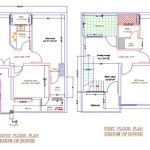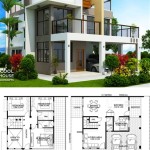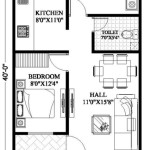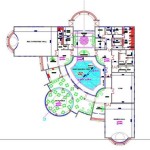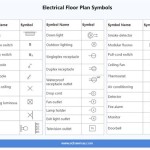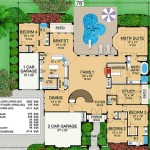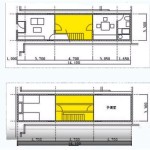```html
Distinctive House Plans: Finding the Right Design for Your Dream Home
The process of building a house starts with selecting the perfect house plan. While many generic plans are available, choosing a distinctive house plan can significantly elevate the final result, reflecting individual style, needs, and preferences. These plans move beyond cookie-cutter designs, offering unique architectural details, innovative layouts, and enhanced functionality. Selecting the right distinctive house plan requires careful consideration of various factors, including lifestyle, budget, site characteristics, and desired aesthetics.
Distinctive house plans are not merely about visual appeal; they prioritize practicality and efficiency. These plans are often created by experienced architects and designers who understand how to optimize space utilization, natural light penetration, and energy efficiency. A well-designed distinctive house plan can increase the overall value of a property and enhance the quality of life for its occupants.
Key Considerations When Choosing a Distinctive House Plan
Several crucial factors must be considered when embarking on the journey of selecting a distinctive house plan. Failing to address these aspects can lead to dissatisfaction with the final product and potentially costly revisions during the construction phase. A thorough understanding of individual needs and a comprehensive evaluation of the available options are paramount.
Lifestyle and Needs: The foundation of choosing any house plan, particularly a distinctive one, is a clear understanding of the homeowner's lifestyle and needs. This entails evaluating the size of the household, the frequency of entertaining, the need for dedicated workspaces, the importance of outdoor living areas, and any specific accessibility requirements. For instance, a family with young children may prioritize a large, open-concept living area and a dedicated playroom, while empty nesters might prefer a smaller, more manageable space with an emphasis on low-maintenance features.
A distinctive house plan should cater to these specific needs by incorporating spaces that promote functionality and comfort. Consider the flow of traffic within the house and how different rooms interact with each other. A well-designed plan will facilitate daily activities and create a harmonious living environment. Furthermore, anticipate future needs and consider how the house can be adapted to accommodate changing circumstances, such as aging in place or the arrival of new family members.
Budget and Feasibility: Establishing a realistic budget is essential before even beginning to look at distinctive house plans. The cost of building a house can vary significantly depending on the size, complexity, materials used, and location. A distinctive house plan, with its unique features and intricate details, may potentially incur higher construction costs compared to a standard plan. Therefore, it is crucial to obtain accurate cost estimates from qualified contractors and builders before committing to a specific design.
Feasibility also plays a critical role. Some distinctive house plans may require specialized construction techniques or materials that are not readily available in all areas. It is important to ensure that the chosen plan can be realistically constructed within the given budget and timeframe. Consulting with a builder early in the process can help identify any potential challenges and allow for adjustments to the plan as needed. Value engineering, a systematic process of analyzing the design to identify cost-saving opportunities without compromising quality or functionality, can be explored to optimize the budget.
Site Characteristics and Regulations: The characteristics of the building site can significantly influence the selection of a distinctive house plan. Factors such as the size, shape, topography, orientation, and soil conditions of the lot must be carefully considered. A house plan that is ideally suited for a flat, rectangular lot may not be suitable for a sloping or irregularly shaped property. Similarly, the orientation of the house should be optimized to maximize natural light and minimize solar heat gain.
Local building codes, zoning regulations, and homeowner association restrictions also play a crucial role. These regulations may impose limitations on the size, height, and style of the house, as well as setback requirements and other restrictions. It is essential to verify that the chosen distinctive house plan complies with all applicable regulations before proceeding with construction. Failure to do so can result in costly delays and even legal repercussions.
Exploring Different Styles of Distinctive House Plans
Distinctive house plans encompass a wide range of architectural styles, each with its own unique characteristics and aesthetic appeal. Exploring these different styles can help homeowners identify the design that best reflects their personal taste and complements the surrounding environment.
Modern and Contemporary Designs: Modern and contemporary house plans are characterized by clean lines, minimalist aesthetics, and an emphasis on natural light. These designs often incorporate large windows, open floor plans, and sustainable materials. Modern house plans typically feature flat or low-sloping roofs, while contemporary plans may incorporate more unconventional rooflines and asymmetrical forms. These styles often prioritize functionality and efficiency, incorporating smart home technology and energy-efficient features.
Traditional and Classical Styles: Traditional and classical house plans draw inspiration from historical architectural periods, such as the Georgian, Colonial, and Victorian eras. These designs typically feature symmetrical facades, ornate detailing, and formal layouts. Traditional house plans often incorporate architectural elements such as columns, pediments, and moldings. These styles evoke a sense of timeless elegance and sophistication. Careful consideration of material selection is crucial to maintain the authenticity of the design.
Rustic and Farmhouse Styles: Rustic and farmhouse house plans emphasize natural materials, warm textures, and a connection to the outdoors. These designs often incorporate exposed beams, wood siding, and stone accents. Farmhouse plans typically feature large porches, gabled roofs, and simple, functional layouts. These styles offer a comfortable and inviting atmosphere, evoking a sense of nostalgia and simplicity. They often include features like fireplaces, oversized sinks, and durable, natural finishes.
Finding and Customizing Distinctive House Plans
Numerous resources are available for finding distinctive house plans, ranging from online plan providers to custom architects. The choice of resource depends on the homeowner's budget, level of involvement, and desired level of customization.
Online Plan Providers: Online plan providers offer a vast selection of pre-designed house plans, including many distinctive options. These plans are typically more affordable than custom designs and can be easily browsed and purchased online. However, the level of customization may be limited, and it is important to carefully review the plan details and specifications before making a purchase. Ensure the plan provider offers comprehensive support and documentation.
Architects and Designers: Engaging an architect or designer allows for the creation of a fully customized distinctive house plan that caters to specific needs and preferences. This option offers the greatest flexibility and control over the design process. Architects can provide expert guidance on site planning, structural engineering, and building codes. However, custom design services typically incur higher costs compared to pre-designed plans. A thorough vetting process is crucial to find an architect whose style and expertise align with the project's requirements.
Customization Options: Whether choosing a pre-designed plan or working with an architect, customization options are often available to tailor the design to individual needs. These options may include modifying the floor plan, adding or removing rooms, changing the exterior finishes, and incorporating specific architectural details. Customization can significantly enhance the functionality and aesthetic appeal of the house plan. Any modifications should be carefully evaluated to ensure they do not compromise the structural integrity or energy efficiency of the design.
Selecting a distinctive house plan is a significant decision that requires careful planning and consideration. By understanding individual needs, exploring different architectural styles, and choosing the right resources, homeowners can create a truly unique and personalized living space that reflects their individual style and enhances their quality of life. The investment in a well-designed distinctive house plan can yield long-term benefits, including increased property value and a more enjoyable living experience.
```
Two Y House Plans Distinctive Homes Double Modern Designs 2 Floor

Modern House Floor Plans Top 12 Features To Include

Unique House Plans 9496 U Home Designing Service Ltd

Unique One Story House Plans Monster

Plan 040h 0020 The House

Plan 052h 0050 The House

Unique House Plan 9047 U Home Designing Service Ltd

2 Level House Plans Distinctive Homes Double Y Modern Two Designs Floor Catalog

Unique Floor Plan Hides Garage 43040pf Architectural Designs House Plans

12 Unique Livable House Plans That Are Sure To Stand Out

